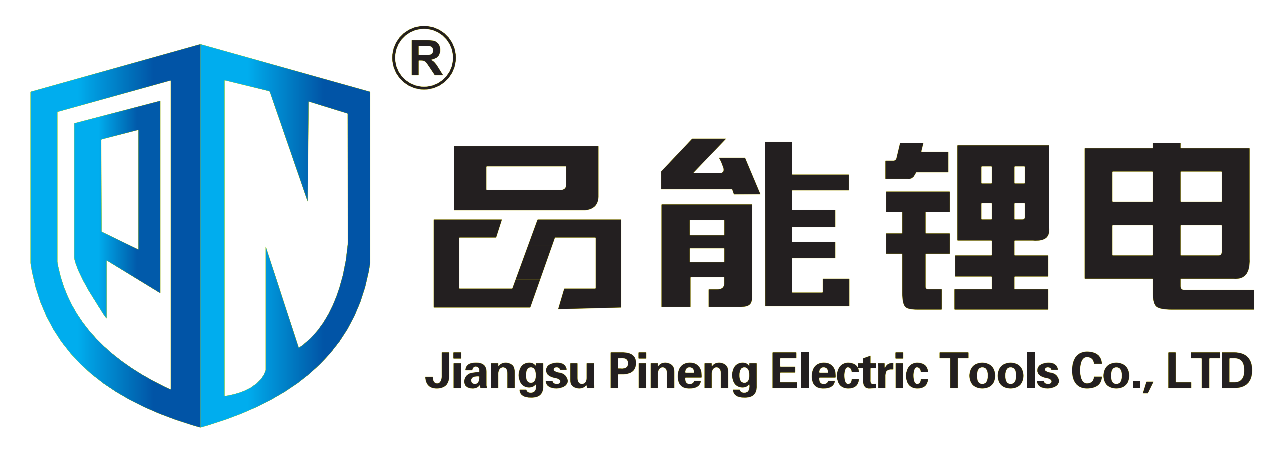Common Wrench Problems: Slipping or Rounding Nuts
Why Wrenches Slip and Damage Fasteners
Slippage problems with wrenches happen all the time, mostly because people aren't using them correctly or have the wrong size for the job. If the wrench just won't sit tight on whatever bolt or nut they're trying to turn, there's a much better chance it will slip off completely. What happens then? The grip gets messed up and pressure gets applied unevenly across those metal pieces. This tends to round off the edges of nuts and bolts making them harder to work with later on. OSHA reports something pretty shocking actually – roughly 20% of construction site injuries involve basic hand tools including wrenches. These kinds of mishaps not only damage expensive equipment but put workers at real risk too. Nobody wants to end up with a broken wrist or worse because their tool slipped right out of their hand during a simple repair task.
Wrench slippage causes problems beyond just fitting wrong. The handles themselves often don't provide enough grip either. When a wrench doesn't stick properly to what it's turning, it slides right off the bolt or nut. This happens all the time in workshops across town. Mechanics in auto shops and construction workers on job sites deal with this daily. Slipping wrenches waste time fixing mistakes and sometimes even break parts they were trying to tighten. Auto repair garages and building contractors see these kinds of incidents regularly. They know something needs to change about how tools grip fasteners better. After all, nobody wants to spend extra hours fixing things because their wrench slipped during a simple task.
Solutions: Proper Fit and Anti-Slip Techniques
Getting the correct wrench size matters a lot when it comes to holding things securely without messing up those tiny screws and bolts. When the tool fits just right, it grabs better and doesn't slip around so much during work. Most experienced mechanics swear by adjustable wrenches that have clear size indicators along the jaw or keep several different sized wrenches handy in their toolkit. This approach makes sure whatever needs tightening gets that tight fit needed. Nobody wants to see sparks flying from a slipped wrench tip while working on something important like car repairs or plumbing jobs at home.
Getting the right size matters, but don't forget about anti-slip features either. Most pros recommend wrenches with those rough textured handles or parts made from rubber because they just give better control. Some folks also swear by wearing special gloves that resist slipping during work tasks. Brands like Craftsman and Snap-On stand out in the trade world for how well their tools stay put in hand thanks to some pretty smart grip tech built right in. The real bonus comes down to money saved too. When workers aren't dropping tools or making mistakes from slips, projects run smoother overall without all those extra costs piling up.
By integrating these practices and selecting the appropriate tools, you can mitigate the risk of slippage and safeguard against work-related incidents. These strategies not only protect fasteners from damage but also enhance overall efficiency and safety on the job.
Incorrect Wrench Size Issues and Quick Fixes
Risks of Using the Wrong Wrench Size
Grabbing the wrong sized wrench might seem like a small mistake, but it can actually cause major problems down the road. Fasteners get stripped and damaged when we use tools that don't fit properly, which means more money spent on repairs than anyone wants to deal with. The problem happens because a poorly fitting wrench just won't spread force across the nut or bolt surface correctly. What follows is those annoying rounded edges that make removal practically impossible without special tools. We've all seen it happen at some point whether working on cars or building structures. Mechanics report seeing this issue constantly in their shops, especially during routine maintenance tasks. And let's not forget about safety concerns either. A wrench that slips while tightening something under pressure isn't just inconvenient it can seriously hurt someone on the job site. That's why experienced technicians always double check their tool sizes before starting any project.
Coin Trick for Temporary Adjustments
When faced with a nut or bolt that's just a bit too big for what we've got lying around, there's this old school fix involving coins that actually works pretty well in a pinch. The idea is simple enough really place some change between the wrench and whatever needs tightening up to get better purchase. Plenty of folks swear by this technique after getting themselves into jams where they couldn't find the right sized tool anywhere nearby. Still worth mentioning though that while it gets the job done temporarily, relying too much on these kinds of workarounds isn't smart practice. We've all seen what happens when people keep using improper methods again and again the tools wear out faster and so do those pesky bolts and nuts we're trying to secure.
When to Upgrade to the Best Impact Wrench
Knowing when to spend money on something better, say a quality impact wrench, really matters if we want to keep things running smoothly and get good results from our mechanical work. When wrenches start slipping all the time, torque just isn't enough anymore, or bolts keep getting damaged during tightening, that's usually a sign it's time for an upgrade. Good impact wrenches have real power behind them and last much longer than cheaper models, so they're pretty much essential for anyone doing serious mechanical work day after day. Shops report workers get done faster when using proper tools, plus there's less damage to equipment over time. And right now? There are plenty of deals going on across different brands of impact wrenches, making this actually a pretty good moment to grab one of these dependable tools before prices go back up again.
Rust and Corrosion in Wrenches
Preventing Rust on Cheap Impact Wrenches
Keeping cheap impact wrenches free from rust is pretty important if we want them to last longer. These budget tools tend to corrode faster because they're made with cheaper materials that don't stand up well to moisture. What most owners forget? A little regular maintenance goes a long way. Just wiping down the tool after each use and applying some light machine oil creates a decent shield against dampness and oxygen exposure. Storage matters too. Anyone who's kept tools in a garage during humid summer months knows how quickly things start to deteriorate. That's why serious users swear by storing their wrenches in sealed plastic containers with those little silica gel packets inside. Some mechanics even recommend investing in a small dehumidifier for tool storage areas. While these cheap wrenches might not cost much upfront, taking care of them properly actually saves money over time. Plus, a well maintained tool just works better when needed most.
Restoring Corroded Tools Safely
Old wrenches covered in rust don't have to go straight to the trash bin. Many hand tools can be brought back from the brink with some elbow grease and basic supplies. Start by scraping off any flaky rust with a wire brush or coarse sandpaper, then tackle stubborn spots with commercial rust removers or even household white vinegar for a cheaper option. Safety first folks - those chemical cleaners sting like crazy if they get on skin, so gloves are a must and work somewhere where fresh air can circulate properly. Mechanics across the country report bringing decades old wrench sets back to working condition this way. Take time checking progress regularly during cleaning, because aggressive scrubbing might actually weaken the metal over time. The real win here is getting functional tools back without spending money on replacements, plus knowing exactly what shape they're in after restoration instead of guessing when buying secondhand ones.
Stuck or Jammed Wrench Mechanisms
Disassembling a Clicky-Style Torque Wrench
Taking apart a clicky torque wrench might seem intimidating at first glance, but don't worry—it gets easier once you know what to do. Start with a clean work area and gather those basic tools everyone seems to lose somewhere (screwdrivers, pliers). The casing typically screws off near where the handle meets the body of the wrench. Keep track of where each part goes during disassembly because putting things back together later will be frustrating otherwise. Most people run into problems when grime builds up inside or old rust starts sticking components together. That's why regular cleaning matters so much. According to industry reports, roughly 30 percent of folks who own these wrenches end up dealing with jams eventually, mostly because they neglect routine maintenance. A quick wipe down every few months saves headaches later on and keeps the tool working properly for years instead of just a couple seasons.
Lubrication Tips for Smooth Operation
Keeping wrenches well lubricated is really important for their smooth operation and avoiding those frustrating situations where parts get stuck or jammed. When we talk about regular lubrication, it actually helps cut down on friction and wear on all those moving pieces, so the wrench keeps working right even after years of use. Picking the right lubricant matters too. For plastic parts on the wrench, silicone based stuff tends to work better, whereas thicker oils are generally better suited for metal components. Most pros recommend checking lubrication levels once a month as part of routine maintenance, which makes a big difference in how long the tool lasts. And don't forget to check what the manufacturer says about compatible products either. Some folks skip this step and end up damaging their tools because they used something that didn't mix well with the materials.
Worn-Out Wrench Components
Identifying Wear in Impact Drill for Tires
Knowing when an impact drill for tires shows signs of wear matters a lot for keeping things running smoothly and staying safe. Look out for faded markings on the tool itself, notice if it starts working less efficiently over time, or check for actual damage like cracks appearing in parts that should be solid. Most of these problems happen because people keep using their tools too long without rest periods, expose them to really tough conditions, or just handle them wrong sometimes. Ignoring what's going on here can get dangerous fast since worn out parts don't perform well when needed most, which creates real safety risks during important jobs. Industry pros generally suggest checking equipment regularly so everything stays functional. Better yet, stick to a proper maintenance schedule so small issues don't turn into big headaches later on down the road.
Replacing Ratchet Heads and Springs
Changing out the ratchet head and spring inside a wrench can bring old tools back to life and give them years more service. Most folks find they need to take apart the wrench first, spot which parts have seen better days, then fit in some decent replacements. Getting good quality parts matters a lot for making sure everything works right after putting it all back together, otherwise we end up fixing the same problem again soon enough. People who keep replacing these bits regularly see their wrenches hanging around much longer than ones left untouched. Beyond just keeping things working well, this kind of maintenance actually makes using the tool safer too, cutting down on accidents and saving money on bigger fixes later on. Mechanics and shop owners swear by checking those components every so often as part of normal upkeep if they want their tools to stick around through many projects.


